Have you ever tasted the rich chocolaty eggs from French Wheaten Marans chickens? Wheaten Marans are prolific egg-layers with a docile and friendly personality.
This article covers everything about wheaten Marans chickens and some important things you should know about these beautiful birds.
Let’s dive deep into their guide.
Quick Overview
| Origin | France |
| APA Class | Continental |
| Hybrid | No |
| Purpose | Dual-Purpose |
| Lifespan | Up to 8 years |
| Eggs Per Year | 200 to 250 |
| Eggs Per Week | 4 to 5 |
| Egg Color | Dark Brown |
| Egg Size | Medium/Large |
| Laying Maturity | 16 to 20 weeks |
| Broodiness | Don’t Often Go Broody |
| Hardiness | Cold and Heat Hardy |
| Time to Maturity | 5 to 6 Months |
| Mature Weight | Hens 6 to 7 lbs, Roosters 7 to 8.5 lbs |
| Temperament | Calm, Docile, Friendly, Easy to Handle |
| Comb Type | Single Comb |
| Lobes | Red |
| Adult Coloration | Wheaten |
| Skin Color | White |
| Legs | Feathered Legs |
| Leg Color | Pinkish White |
| Crest, Muffs, Beard | No |
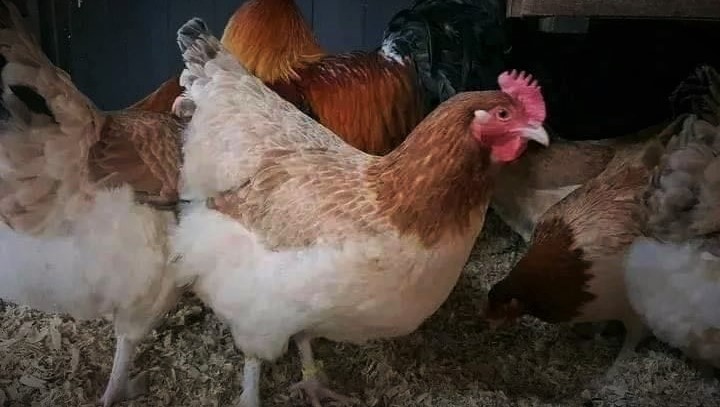
Why is the Word ‘French’ Used in their Name?
The word “French” is used with Marans chickens because they come from France, especially from a town called Marans in the Poitou-Charentes region.
The chickens are named after the town. So when folks talk about Maran chickens, they often say “French” to show where they’re from. It’s like how other chicken breeds are named after where they’re from, such as the Rhode Island Red or the Plymouth Rock.
Why is it Named Wheaten Marans?
“Wheaten” in Wheaten Marans chicken means the color of the chicken’s feathers, they have wheat-colored or straw-colored feathers.
Marans is a town in France where Marans chickens originated. “Marans” honors this place and the people who created the breed.
How to Pronounce the Word Marans
You might think “Maran” is for one chicken (singular) and “Marans” is for more than one (plural), but that’s not the case.
“Marans” is always spelled in the plural. One chicken is a “Marans,” and two chickens are also “Marans.” The “s” in “Marans” is silent. It’s spelled with an “s” but pronounced “Muh-ran.”.
Brief History of French Wheaten Marans
The Marans chicken originated from a town called Marans in western France in the region La Rochelle and was originally developed in the 19th century.
In the early 1900s, breeders worked to make the breed the same, especially caring about the color of its eggs and their appearance. This breed was brought to the US and standardized there. The American Poultry Association now recognizes this breed.
The breeders also made the English Marans along with the French Marans. The main difference between them is French Marans have feathers that go all the way to their feet, but English Marans don’t.
These are somehow similar to Bovans Browns and Hyline Brown in terms of appearance.
French Wheaten Maran Appearance
Wheaten Marans are medium-sized to large-sized birds with medium-sized heads. They have a single reddish comb and amber-colored eyes.
Their wattles are smaller, and they have red-colored earlobes. The red earlobes also indicate their egg color. Wheaten Marans have a V-shaped feather pattern, pearl-colored beaks, and pinkish-gray feathered legs.
Wheaten Maran chickens have plumage with soft cream and light golden-wheat coloration, resembling wheat grains and giving them a robust appearance.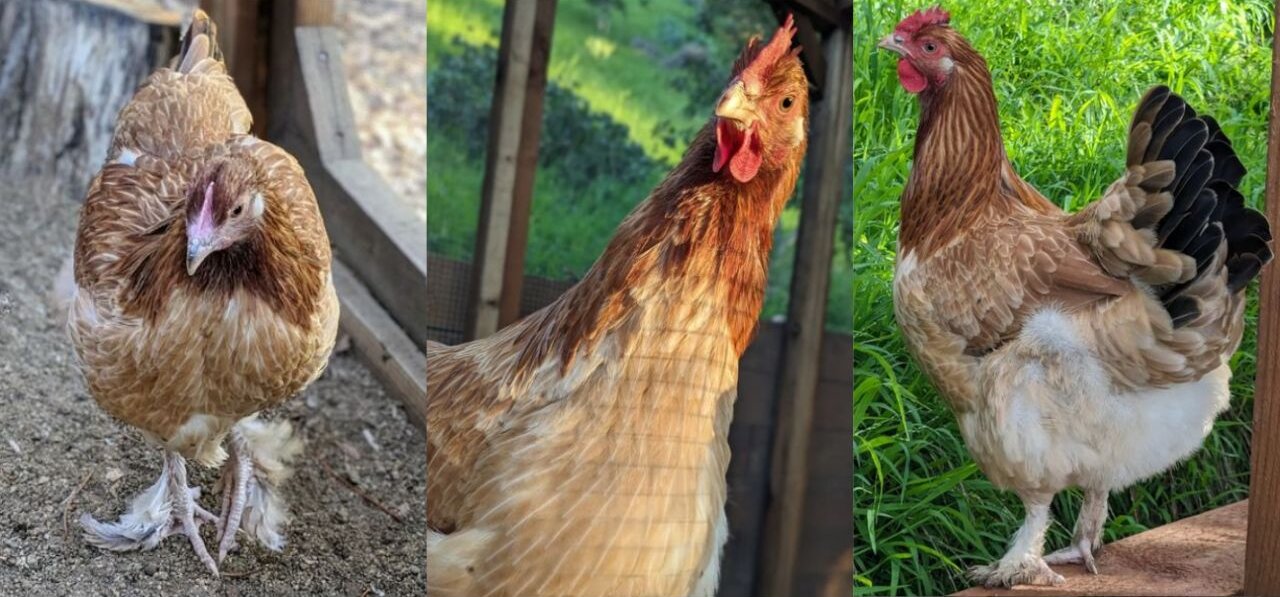
French Wheaten Marans Temperament
French Wheaten Marans chickens have a calm and friendly temperament. They tend to be docile birds and are easy to handle and care for. They love to be around humans, enjoy human company, and are perfect pet birds.
That’s why they are so good with your children. They’re good foragers and do well roaming around freely.
This is an ideal breed for:
Egg Enthusiasts: Known for their strikingly beautiful eggs, the French Wheaten Marans produce eggs that are not only delicious but also visually appealing. Their eggs are a favorite among collectors and chefs who appreciate their unique color and quality.
Family-Friendly Pets: Thanks to their gentle nature, they make great companions for families, especially those with children. Their love for human interaction makes them ideal as pet birds, providing both companionship and a delightful egg-laying experience.
Small Farms & Homesteads: Their dual-purpose nature makes them perfect for small farms and homesteads where both eggs and meat are valued. Their docility allows them to integrate well into mixed-bird flocks, where their calm demeanor is appreciated.
Heritage Poultry Enthusiasts: As a breed with a rich historical background, French Wheaten Marans appeal to those interested in preserving traditional poultry breeds. Raising them offers not just practical benefits but also a connection to poultry-raising heritage.
Whether you’re drawn to their friendly disposition or their practical benefits, French Wheaten Marans are a versatile choice for various settings, providing enjoyment and utility to their keepers.
French Wheaten Marans Egg Production
“Wheaten Marans are prolific egg layers, a healthy and happy hen produces 200 to 250 medium/large dark brown color eggs per year or 4 to 6 eggs per week. Some people think that as Wheaten Marans hens lay more eggs, their eggs start to get lighter in color.
Their egg-laying ability can change based on things like their diet, health, and the environment where they live. Giving your wheaten Marans chickens balanced food, enough light, and a comfortable and safe place to live can increase their productivity.
These exquisite hens are renowned for their rich, dark chocolate-colored eggs, which are often sought after by gourmet enthusiasts. At the start of the laying season, you can expect their eggs to be at their darkest, adding an eye-catching element to any egg basket.
However, as the season progresses, you might observe a subtle lightening in their shell color.
Despite not being the most prolific layers compared to other breeds, the size and distinctive hue of the Wheaten Maran eggs make them a prized addition to any backyard flock.
Typically, Marans begin laying at about 5-6 months of age, and their charming presence can enhance the aesthetic value of your farm.”
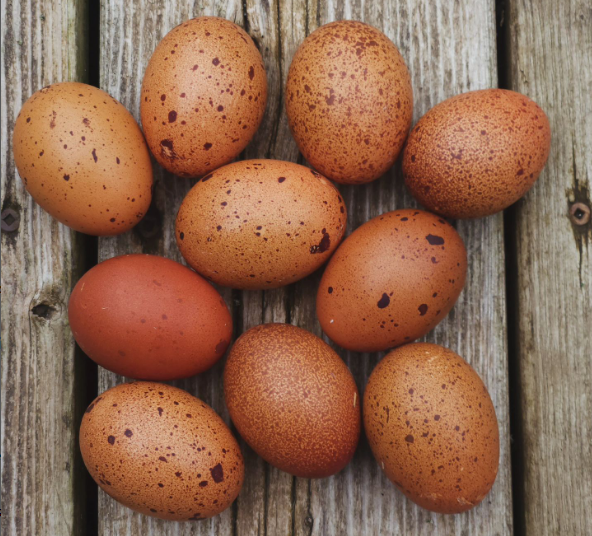
Lifespan Of French Wheaten Marans Chickens
French Wheaten Marans chickens approximately can live for 5 to 8 years or more with proper and appropriate care.
Things like genes, diet, health care, and the environment where they live can affect their lifespan and also their productivity.
Providing a balanced diet, taking them to the vet, and making sure they have a good environment to live in can increase their lifespan.
Things You Should Know About Wheaten Marans
Here are some to keep in mind:
-
Wheaten Marans Need Extra Care
Wheaten Marans need extra care and attention because they have feathered legs, maintain feather quality, and can easily get sick.
Chickens with feathered legs can have trouble with cleanliness as mud and dirt tends to cling to their feathers. Additionally, feather-footed breeds are at risk of frostbite.
Regularly cleaning the feet of your French wheaten Marans is essential to keep them hygienic and safe from health problems.
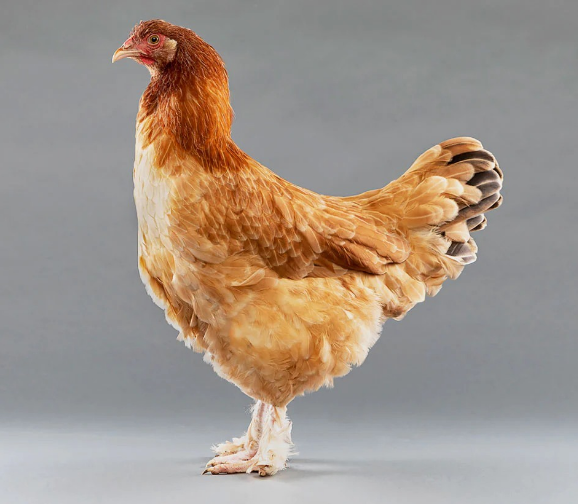
-
French Maran Chicks Can Be Tricky to Sex
French Marans chickens have a challenge for hatcheries when it comes to vent sexing, sexing is a method used to know the gender of chicks.
This means that when you buy French Maran chicks from a hatchery, the hatchery cannot guarantee with certainty whether each chick is male or female.
So, the first thing to keep in mind before purchasing these chickens is that the seller and you have no choice whether the chick is male or female.
-
Wheaten Marans Hens Don’t Often Sit on their Eggs
Wheaten Maran chickens are not sitters, they don’t often sit on their eggs and may occasionally go broody, but many never will. For broodiness, these chickens are not the best choice.
-
Wheaten Marans Easily get Frostbite and Other Problems on their Combs.
Wheaten Marans chickens are also susceptible to frostbite on their combs, which is a common issue with single-comb breeds.
A great solution to this problem is a Sweeter Heater. It’s a heater you hang above where your chickens sleep, keeping them warm in winter and stopping frostbite.
Why Are Marans Chickens Expensive?
Marans chickens are prized for their unique egg-laying capabilities, but this comes at a cost. The price tag is largely due to the intensive and selective breeding process necessary to maintain their desirable traits.
Breeders are dedicated to ensuring that Maran hens produce eggs with a consistently deep and rich color, which is not a common feature in many other breeds.
Here are some factors that contribute to these chickens’ cost:
- Selective Breeding:
Creating Maran chickens with consistent egg quality involves a meticulous breeding method.
This process is resource-intensive and time-consuming, requiring careful selection and breeding practices.
- Unique Egg Color:
The sought-after dark hue of Maran eggs is a result of specific genetic traits that are preserved through breeding.
Maintaining these genetics adds a layer of complexity and value to the breed.
- Resource Investment:
Breeding high-quality Marans requires significant investment in terms of time, expertise, and facilities, which inevitably increases the price.
- Limited Supply:
Given the specific breeding requirements, Marans are not as widely available as more common breeds, contributing to their higher cost.
So the expense of Maran chickens reflects the thorough breeding efforts, unique egg coloration, and the resources required to produce hens that meet these high standards.
How to Care for French Wheaten Marans Chicken
Proper care will ensure the well-being and high productivity of your French wheaten marans birds, to take proper care of them you need to follow some of the basic needs:
-
Feather Care
To keep the feathers of wheaten marans nice, handle them gently and make sure their living space is clean and dry.
Check their feathers often for any damage or signs that they’re wearing out too much. If you see a problem, fix it right away, and trim any damaged or extra-long feathers to stop more issues.
-
House Managing
Make sure to provide a comfortable, well-built, ventilated, and safe from-predators chicken coop to live safely and comfortably.
You should give each chicken at least 2 to 3 square feet of space in the coop, and about 8 to 10 square feet of space outside for moving and exploring.
Try to clean and dry the coop at least twice or thrice a week and make sure to dry the coop after wetting them. Provide nesting boxes filled with clean and soft straws to lay eggs and collect eggs daily to prevent wasting and dirtiness.
-
Veterinary Care
Regularly checking for signs of illness and injuries and seeking advice from a veterinarian will help maintain their health and well-being.
Provide needed vaccination and deworming as recommended by the veterinarian and keep their surroundings and their coop clean to prevent microorganisms and infections.
Make sure to give your wheaten marans chicken a chicken friend so they don’t feel lonely and to prevent any mental issues.
-
Diet and Nutrition
Provide a balanced diet, including commercial feed, to your wheaten marans chicken to meet all their nutritional requirements.
Adding fruits (mangoes, watermelon, honeydew, etc), vegetables (carrots, broccoli, cucumber, etc), and occasional treats to their diet, to keep them happy and active. Ensure access to clean and fresh water all the time.
Make sure to avoid any harmful food like chocolate, avocado skin or pit, coffee or tea, apple seeds, raw potatoes, green potatoes, onions, garlic, or raw eggs.
-
Maintenance and Grooming
Trim any stray and unnecessary feathers and nails to prevent them from becoming overgrown, which could cause mobility and vision problems.
Make sure to provide clean and dry soil in their surroundings for dust baths. Dust baths help regulate oil production and keep their feathers healthy.
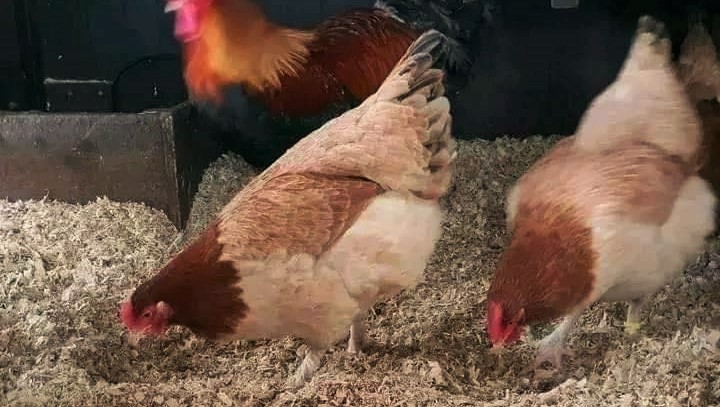
Final Thoughts
In conclusion, the French wheaten marans chickens are well known for their soft golden-wheat feathers, ability to produce chocolaty eggs, and a docile and friendly temperament.
You can purchase French wheaten maran chickens from many hatcheries like MeyerHatchery and HooversHatchery.
Feel free to share your thoughts and problems with us. We would love to help you.
FAQs
Are French Wheaten Marans good layers?
Wheaten Maran chickens are popular among chicken keepers for their egg-laying abilities, attractive appearance, and friendly, docile personality. Marans are generally good layers and lay 200 to 250 dark brown eggs.
How often do marans lay eggs?
Maran chicken are good layers, producing around 4 to 5 eggs per week on average. Some of them may lay more or fewer eggs than average.
When do wheaten marans start laying?
Wheaten Marans chickens may start laying eggs at around 5 to 6 months of age, however, this can vary depending on individual birds and environmental factors.
What color eggs do wheaten Marans lay?
Wheaten Marans chickens are famous for the color of their eggs, they lay chocolate or dark brown colored eggs.
Which Marans lay the darkest eggs?
Black Copper Marans, which is a variety of maran chickens, can lay the darkest of the dark brown eggs. These eggs are so rich in color that they are often sought after by gourmet enthusiasts. However, if you’re considering other varieties, the French Wheaten Marans offer a delightful alternative.
How big are wheaten Marans?
Wheaten Marans are medium-sized birds, they weigh between 6 to 8.5 lbs.
Do French wheaten maran pullets have feathered legs?
Yes, French Wheaten Marans pullets have feathered legs. Feathering on the legs is a characteristic trait of French Maran chickens.

Hello! I’m Ibrahim, the owner and writer of this blog. I run a chicken farm with 160 chickens, and I’ve gained a lot of knowledge about raising and caring for them. Now, I want to share my insights and experiences with you to help you in chicken keeping.

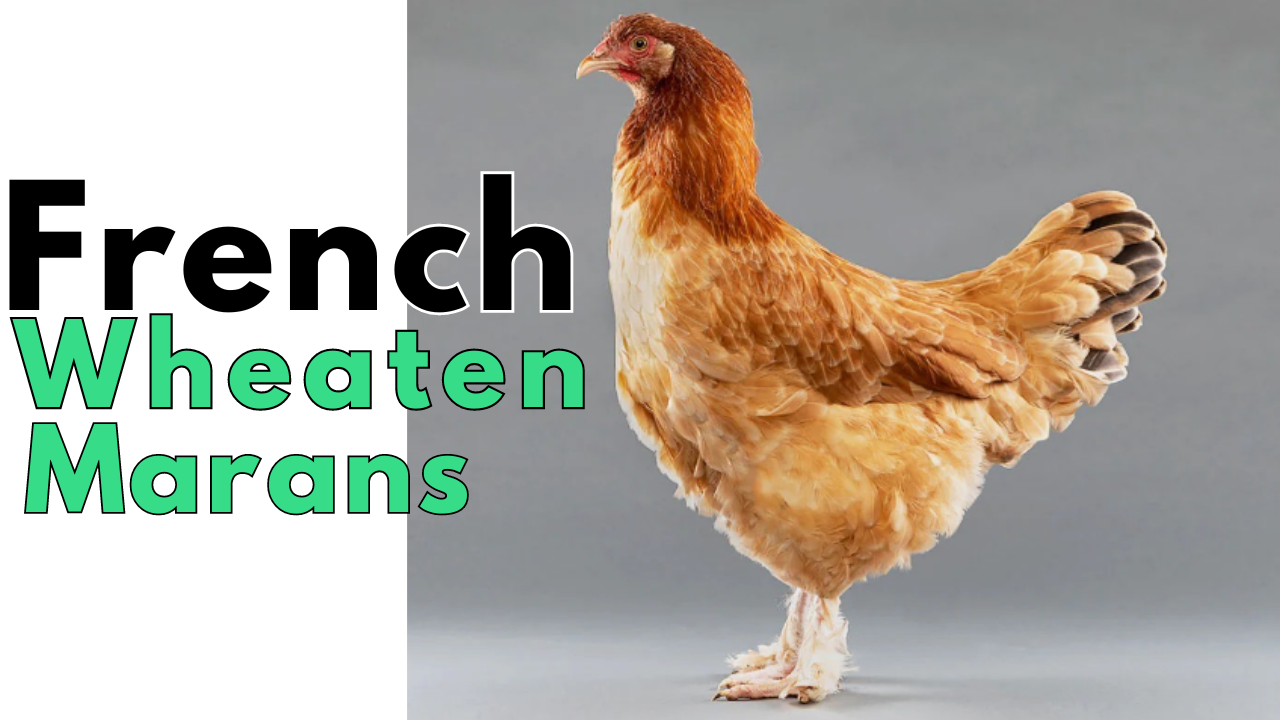
1 thought on “French Wheaten Marans Chickens Chocolaty Egg Layers”